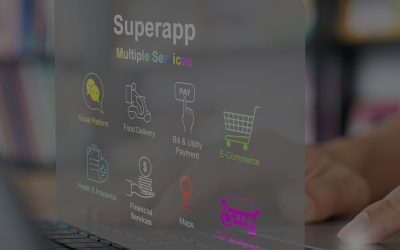Differentiated Customer Experience – Standardization, Personalization and Differentiation
With growing commoditization and parity of products and services, customer experience is today widely accepted as the most effective differentiator. However, in the world of me-too brands and marketers, parity in customer experience on digital platforms can easily be achieved with off-shelf technology. This article attempts to explore ways and means through which a brand can consistently provide differentiated brand experiences at every touchpoint.
Knowing and Setting Customer Expectations:
Do not delight your customers – as a few marketers will tell you – because today’s delight becomes tomorrow’s expectation. The key to consistent customer experience is knowing and setting right customer expectations. A very poor experience at one touchpoint remedied by delight at another does not produce optimal customer results like increased customer lifetime value or advocacy, and only ends up exhausting valuable resources.
It is, therefore, important to communicate clearly to the customers a minimum guaranteed experience at each touchpoint that standardizes the experience. For example, a standard 15-minute response time for tweets or a maximum of 5-minute wait on customer care helpline. It is vital to constantly seek feedback pertaining to experience to gauge whether it meets their expectations. This gives a clear view as to what customers expect during brand interactions.
Standardization, Personalization and Differentiation:
We often see that brands try to implement what works for other brands. If customer experience standardization is the buzzword, we must expect every self-respecting brand in the market to take one step or the other to improve customer experience. So how do we standardize, personalize and differentiate at the same time?
- Brand Differentiation
It is imperative that brand personality, tone of interaction, language and unique value that a brand can add to each customer experience is identified, and the brand be brought to life in the interactions with the customers. Be it a twitter reply or customer care response, a unique tone of voice and character differentiating the experience is necessary. If your ads are quirky, your customer care needs to sound slick, not formal.
- Standardization
Does your brand talk in the same tone of voice in both twitter and customer care? Do customers from your retail stores and eCommerce go back thinking the same thing about your brand? Standardization helps to deliver consistent quality of customer experiences repeatedly at each touchpoint. Customer feedback improving the qualitative aspects, persistent measurement and optimization will lead to higher consistency and quality.
- Personalization & Privacy
Does your communication make the customers feel they are just a record in your database? The true test of the personalization is making the customers feel that they have a privileged relationship with a brand. An illusion of one-on-one relationship must be created using personalization. Customers want personalization but it is definitely not limited to addressing them by their full names in emails & text messages, it about communication being personalized to the customer’s preferences, need, context, issues and expectations. Cold calling customers at random or sending offers on products that customers hate will surely earn trolls & memes on Twitter.
The challenge is to personalize without creeping out the customer and sparking privacy concerns. It is all about building trust to motivate customers to share more about themselves and letting the brand gain a deeper insight in to customer behavior. There is a fine line between staying connected with customers and stalking them.
Standardization, personalization and differentiation of customer experiences at scale is the challenge that confronts us today. A finely crafted and unique customer experience strategy is the need of the hour and not gimmicks or me-too tactics, which will only increase the clutter.











